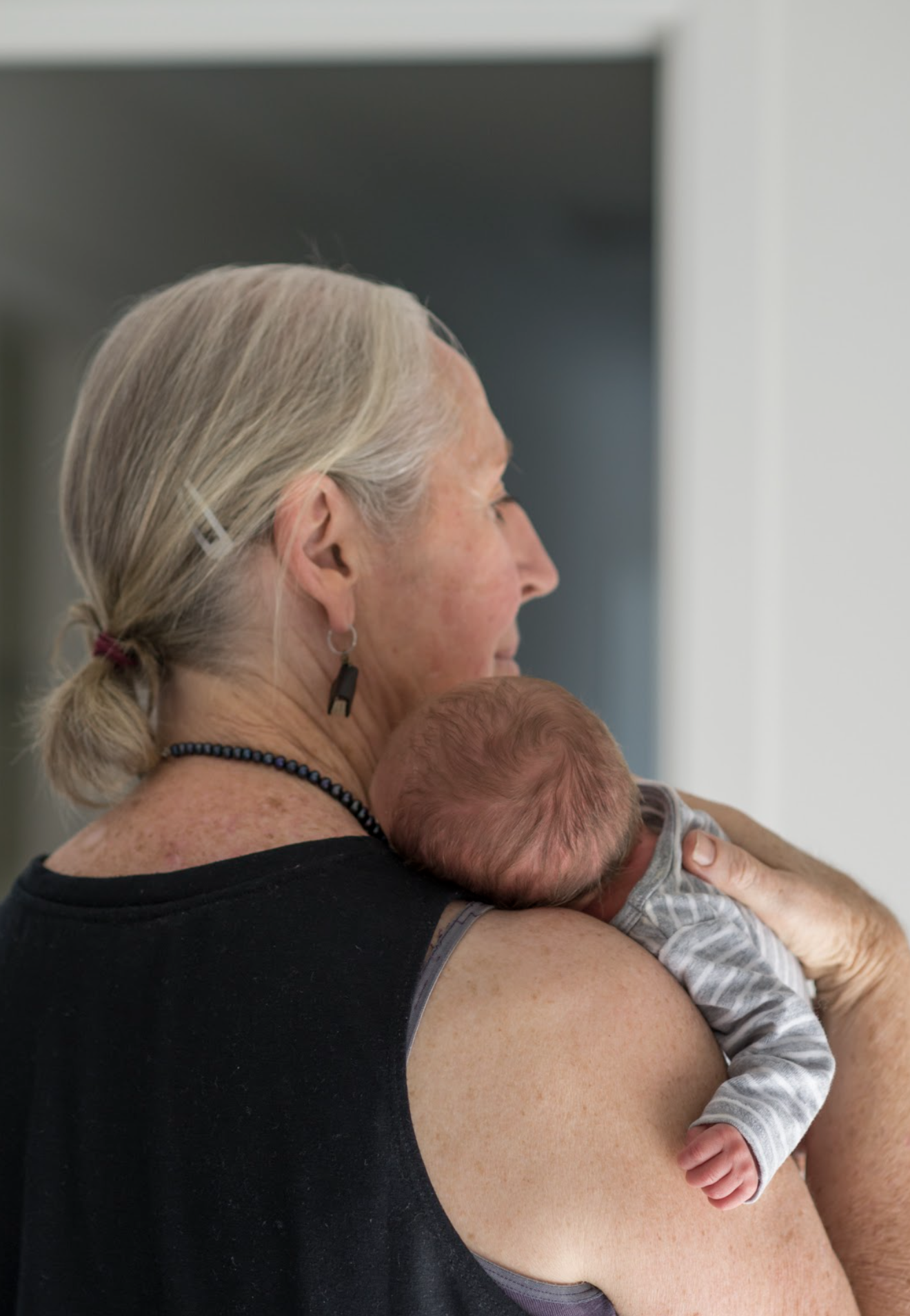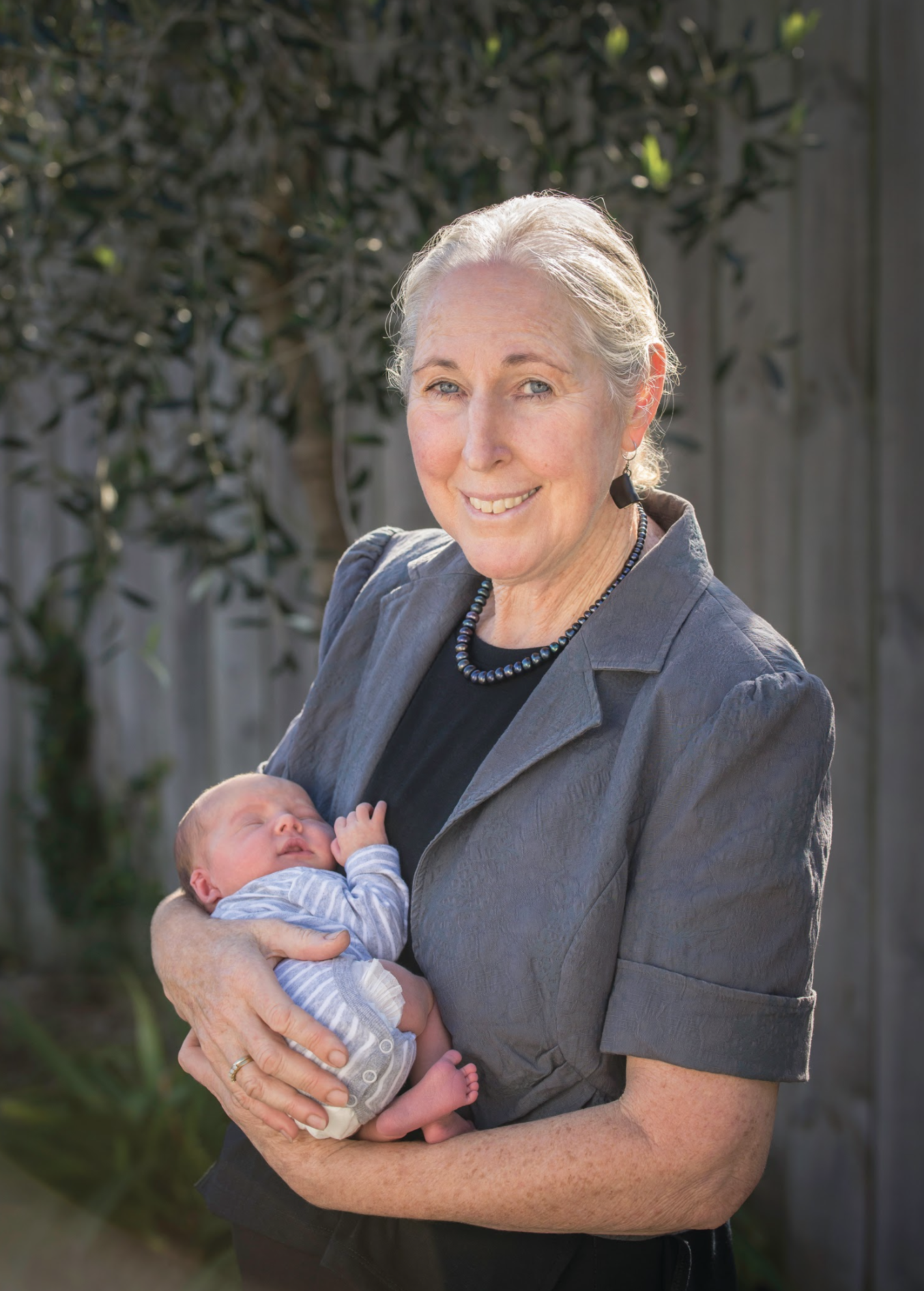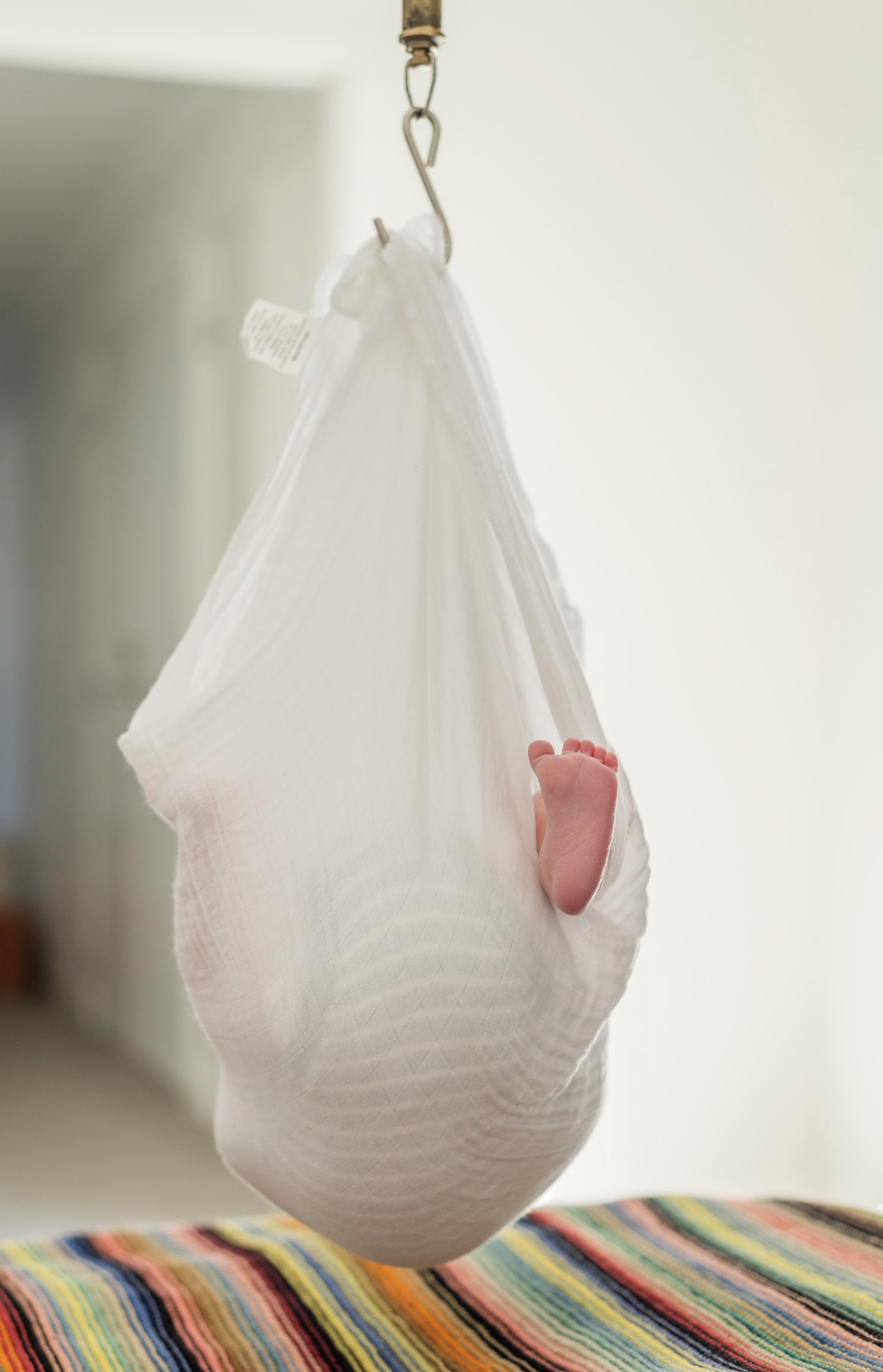Born ready
Mother, midwife and Instagram influencer Carmen Lett talks to UNO about her new venture, Hatched Online.
Mother, midwife and Instagram influencer Carmen Lett talks to UNO about her new venture, Hatched Online.
WORDS JENNY RUDD / PHOTOS RACHEL DOBBS
When you’re heavily pregnant with your first child, you want: 1) a baby handbook, and 2) to lie on the sofa. Knowing this, Carmen Lett, a midwife and the mother of four young children, has founded Hatched Online antenatal and parenting classes.
“As a midwife on the postnatal ward at Tauranga Hospital, I noticed a lot of parents coming through who didn’t know much about what happened straight after birth. I’d often find myself on the ward showing people how to change nappies or swaddle a baby to help them sleep, or teaching them what a newborn’s feeding pattern might be like or that babies are often wakeful on night two of their life. I realised that lots of these fundamentals weren’t being taught in antenatal classes.”
There’s nothing quite as shocking as realising you’re responsible for another person’s life. You’re sent on your merry way from the hospital with a tiny baby and not so much as a “Do you know what you’re doing with that?”; you’ve probably experienced more stringent checks when taking out a DVD at Blockbuster. After going through the most physically and emotionally intense time many of us will ever experience, you’re promoted with immediate effect to being in sole charge of someone who’s completely helpless, unable to feed themselves and can barely communicate their needs.
“Because first-time mums tend to do lots of research and antenatal classes cover it really well, people were really clued up about the birth process, but there was a real knowledge gap in terms of what to do after you’ve had the baby,” says Carmen. She knew that empowering mums and dads with this information would remove much of the fear.
“I’ve been running Hatched On Location antenatal classes in Tauranga for the past few years, and they’re always full,” says Carmen. “Expectant parents are keen to learn everything they can about birth and the early days of parenting, but there were lots of couples who missed out because their partner worked shifts, they lived rurally, or the pregnant mum was on bedrest.” Once she realised so many people weren’t getting this vital information, she set about launching Hatched Online, with her husband, Aidan, a tech start-up whizz, handily in the mix.
Hatched Online’s antenatal classes – which also include that invaluable postnatal education – are delivered in the form of 13 videos, each about half an hour long. They’re the same as Carmen’s Hatched On Location classes, with a few bonus extras. Whether you snuggle down and watch one every evening, or binge watch the whole lot over a couple of days, once you subscribe, you can view them as often as you like for six months (and given baby brain is a real thing, it’s safe to say most parents-to-be would be happy to take advantage of being able to watch certain modules more than once).
“The friends you make are an important part of antenatal classes, so for my online parents, I’ve set up a Facebook page that everyone gets access to, and I do live Q&A sessions so you can ask as many questions as you like,” says Carmen. “The great things about Facebook is that all those questions and answers stay right there, so you can go back and read them all.
“I often hear that parents feel pressured to do things in a particular way. So it was also important to me to offer information on all the options,” she continues. “For instance, if you want a home birth, or an elective cesarean, I provide all the information, then you can make your choice one way or the other. We focus on healthy babies – without guilt.”
Carmen’s Hatched On Location classes are nearly always full, and not just because she serves snacks and hot drinks, and gives out goodie bags filled with baby products. If you had to pick anyone to teach you about babies, you’d pick her. She’s been a midwife for 10 years (“I’ve known I wanted to be a midwife since I was 15 years old”), and as a mother of four – Rosie (5), twins Asher and Jude (4), and Taj (2) – has some pretty colourful birth stories of her own. “I’ve had a C-section, vaginal births after a C-section, ventouse, epidurals, the lot,” she says.
Carmen also runs popular mummy blog The Lett Tribe, and thousands follow her Instagram account @carmenlett, where she makes it clear she loves her job. “Gimme all the babies!” she says.
FIND more information about Carmen’s Hatched Online and Hatched On Location classes at: HATCHEDANTENATAL.CO.NZ
Midwife Anne Sharplin: 2,000 babies and counting
The New Zealand College of Midwives recommends a caseload of about 40 babies per year. Most midwives retire having delivered hundreds of babies. Anne Sharplin has attended the births of more than 2000 babies and is still going. That’s about 50 babies every year of her 35-year career.
WORDS Jenny Rudd PHOTOS Brydie Thompson
The New Zealand College of Midwives recommends a caseload of about 40 babies per year. Most midwives retire having delivered hundreds of babies. Anne Sharplin has attended the births of more than 2000 babies and is still going. That’s about 50 babies every year of her 35 year career.
Anne has slept knowing a phone call may wake her at any minute and she’ll walk into a highly-charged and unpredictable situation for most nights of her adult life. And has lost up to a whole night of sleep about every five days, depending on when the babies decide to come into the world. Then there are the ante and postnatal visits required for other pregnant mums on Anne’s books, which must be conducted during the day over the rest of the week.
This sounds like a demanding job even with no other commitments, but Anne, incredibly, was a solo mother of two little boys from the get-go. And there weren’t the child-care options in the eighties that we have today. The pressure must have been incredible. But reading her youngest son Adam’s account of his childhood, as well as many of Anne’s birth stories, the same description comes up time and again; of a calm, powerful, kind, and assured woman.
Indeed it has been a battle, during the writing of this article, to keep Anne on the topic of herself. She doesn’t see herself as exceptional, and insists we talk more about midwives and the choices of maternity care at home she believes all women should have. She talks of herself in very humble terms and took some persuading to feature in the magazine.
WHAT DOES A MIDWIFE DO?
Anne’s description of her own job could not be more understated. “You have to be quite present - you need to react to lots of things that are happening at the same time, although it often appears you are doing nothing at all.”
According to the dictionary, a midwife is a person qualified to aid the delivery of babies and look after women before, during and after childbirth.
Anyone who has either had a baby, or seen a baby being born, will realise that this official description lacks the wild and intense emotion which can accompany pregnancy and childbirth.
A midwife assesses and manages risk with the highest possible stakes, on a second-to-second basis, over an undeterminable period of time. The ideal working conditions would be total quiet, to assist the concentration required to manage all the unpredictable goings-on. However it’s more likely to involve bestial screaming, sobbing men, and a lot of strange fluid.
The midwife may be called upon at any time of day, and so must always be prepared. She may be called to work at 2 am in torrential rain, or on Christmas Day in the middle of present opening. No matter - the midwife must drop everything, and go to work.
It makes some other jobs look a little frivolous, doesn’t it?
“Being on-call is a way of living which takes surrender.
You can plan a big family Christmas, only to be called away at 6 am.”
BIRTHING CHOICES
“Midwifery facilitates a process of wellness. That’s what motivated my choice of study. After qualifying in Oldham, Manchester in 1981, I returned home to Auckland and started to attend homebirths with Veronika Muller, Joan Donley, Carolyn Young and others.
“The choices women have now are vastly different to when I starting practising. I had my first son, Joseph, in Auckland in 1983. My midwife was Joan Donley. At the time, a doctor had to be present at all births. There were few midwives and doctors who offered a domiciliary (home) birth service and the pay was poor, and inferior to that of midwives practising in hospital.
“In 1986, I was living in Thames with my son Joseph and his father. Three women from the Bay of Plenty asked me to attend their births as at the time, the only domiciliary (homebirth) midwife had stopped practising because of the low pay and lack of support.
“I came down with my son and stayed at my brother-in-law’s house with my nephews Alex and James, and my niece Annah who is now a midwife herself. Between the three women, they lent me a blue Morris Minor and I took my little boy with me to attend each of their births.
“We moved to Tauranga the following year. It was such a busy time; my sister had died, her children were here and I wanted to be close to them. I was pregnant with Adam, had a toddler, and attended eleven home births that year, right up to being eight months pregnant myself. I was frequently exhausted and we had very little money.”
REFORM
The Nurses’ Amendment Act of 1990, championed and implemented by Helen Clark the then Health Minister, changed everything. Midwives had autonomy, so no longer needed a doctor at the birth. And they were given equality of pay when attending home births. Suddenly it was possible to earn a proper living.
“Being on-call is a way of living which takes surrender. You can plan a big family Christmas, only to be called away at 6 am. My sons made me breakfast in bed one Mother’s Day, which was interrupted by a phone call; I gulped it down, gave them a quick cuddle, threw on some clothes and left. Many have retired by now as it’s demanding to live on-call.”
“I have always cared for six women per month. Care starts early in the pregnancy and continues until six weeks after the baby is born. I have tried to reduce to four women a month, but I often get requests from families for whom I’ve been the midwife for two generations. Because I’ve been around a while, I have attended the births of aunties, cousins, sisters, nieces. However you can’t be present at every single birth; on the days I can’t attend, I rely on my midwifery partner Lyn Allport. We have also had support from many other wonderful midwives.”
Now a grandmother to Shore, Anne enjoys taking him to weekly swimming lessons, and in the future plans to present the vast data she has collected from her 2000 births, along with her observations as part of a university degree. Once completed, this will be an important body of work, full of Anne’s heartfelt intelligence. It’s no wonder the French for midwife, la sage femme, translates as wise woman.
PINARD HORN
“The pinard is an excellent tool; a simple, hollow horn shape which amplifies sound. A type of stethoscope, it’s designed for auscultation: the act of listening to the body’s internal workings - in this case, the baby’s heartbeat inside the mother. Widely used across Europe, it never breaks down, doesn’t need to be plugged in and is totally trustworthy.”
BIRTH STORIES:
Sarah Wilson
When my younger son Henry was born in 1999, Anne held an ice-cream container between my legs while Henry’s father drove us to Tauranga hospital in Anne’s van. My labour lasted just 20 minutes and Henry wasn’t breathing when he was born. I attribute Henry’s life to Anne’s calmness and directing of the wildly frightening proceedings. He was incubated for the first week of his life; we couldn’t touch him, and I had severe blood poisoning. At the time of Henry’s birth we lived near Anne’s home in Simpson Road in Papamoa. Anne’s son Adam and my daughter Billie became great friends during those years.
Rhonda Collins
On Christmas Eve, I was diagnosed with pre-eclampsia and induced in hospital (my date was 31st December). My midwife, Lyn Allport had Christmas Day off, so I called Anne who was my fill-in midwife at 5 am on Christmas Day. Throughout the labour, Anne stayed with me. She was wonderful - so kind and supportive and gracious. At 9.42 pm, my daughter Mackenzie was born with the aid of forceps. Anne and my husband Anthony shared a Christmas dinner kindly provided by the hospital during the day, and drank lots of tea. I caught up with Anne a few weeks later and bought her a beautiful tea cup and saucer to say thank you.
Pauline Scott and daughter Sophie
I met Anne in 1983, before she moved to the Bay of Plenty. In 1990, following a series of health care reforms, New Zealand midwives were recognised as independent practitioners. Anne was at the forefront of this long and challenging battle for midwives’ autonomy. As a childbirth educator, I had a special bond with Anne. This became closer when I discovered I was pregnant at 41 with my third child after an eleven-year gap.
On 25th January 1992, Sophie Ann Joy was born at home. Anne's calming influence was invaluable, especially as Sophie's shoulders got stuck as she was being born, but there was no hint of panic. Anne offered support and encouragement, not telling me what to do, or demanding me to hurry along. Her total calmness and trust in the birth process allowed me do what my body was designed for.
Sophie has been born less than a minute in this picture, and I'm rubbing her back gently to help her take her first breath. Anne's hands are to the left of the photo, in a pose of calmness and reassurance. It is a special moment, surrounded by family and with the person I most trusted in the world: Anne Sharplin, mother, midwife and one marvellous woman.
Danielle Hart-Murray trained to be a midwife with Anne (who also attended two of Danielle’s siblings)
It was Anne who inspired me to become a midwife, and I was lucky enough to complete my final year working alongside her. Anne taught me skills which simply can’t be taught in a classroom. The way she works with women and their whanau is exemplary; no other midwife I have worked with shows the amount of passion and dedication for ensuring the care is truly woman-centred. She goes above and beyond for the women she cares for, but would never say so herself. A role model not just to midwives, but to all women.
On our Facebook Page, we posted a request for photos of Anne’s babies. Some of the hundreds of comments about Anne:
Such a beautiful, humble lady.
Anne you have inspired, cared for, encouraged and supported so many woman with your abundance of skill, knowledge and passion.
A very special lady with a gift.
Her patience and strength is inspiring. She empowers women to do what they are made to do without the fear that is unfortunately part of modern pregnancy and birth.
Anne is amazing, a beautiful, knowledgable and intuitive soul.
Absolute gold, we had just arrived in New Zealand, and she even gave us a lovely queen-sized bed! Love you Anne x
A wonderfully calming, reassuring influence.
We are so lucky to have her! She is the best of the best!!
I love this lady.
Anne always came with a quiet confidence that nothing was too difficult to take on and she proved this time and again with all the adversities that came my way. Dealing with my own health issues as well as my babies’ successful outcomes resonates with my children, who are now choosing her, she is simply the BEST !!!
I met Anne nearly 18 years ago and she came highly recommended by Māori mums because of her respect for Te Ao Māori. We welcomed her into our home and she would go on to help us bring three of our children into this world at home. So when our first moko was announced we knew she would be the one to also help us. We are so grateful for all her care and aroha.
Such a beautiful being.







